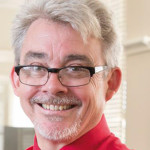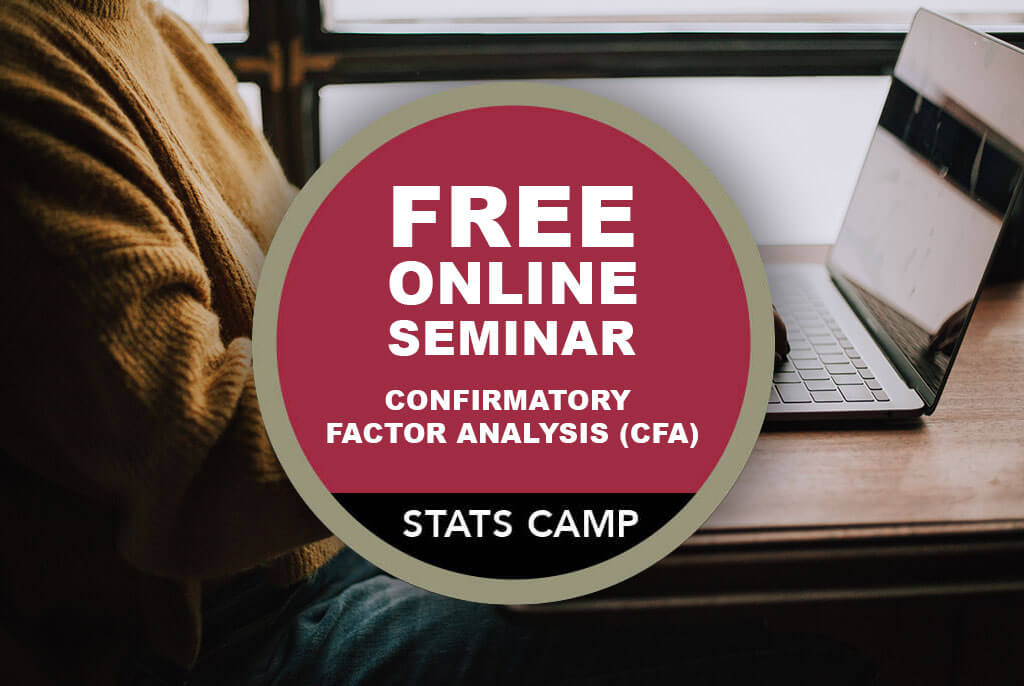LIVESTREAM / ASYNCHRONOUS (Link Expires In 48hrs) – 4hr Statistics Short Course
Seminar Overview: (CFA) Confirmatory Factor Analysis
Join us for an enlightening and intellectually stimulating afternoon as we delve into the fascinating world of Confirmatory Factor Analysis (CFA) at our free 4-hour seminar featuring renowned experts, Dr. Todd D. Little and Zachary Stickley. This seminar promises to be a transformative experience for those seeking a comprehensive understanding of CFA, a crucial statistical technique used in various fields such as psychology, sociology, and economics. Dr. Little, a leading figure in the field of structural equation modeling and CFA, will guide us through the foundational principles and practical applications of CFA, while Zachary Stickley, an emerging authority in statistical methodology, will provide contemporary insights and real-world examples. Whether you are a seasoned researcher or just starting to explore the world of factor analysis, this seminar offers a unique opportunity to expand your knowledge and engage with experts in the field. Don’t miss this chance to enhance your statistical expertise and network with fellow enthusiasts in a dynamic learning environment.
Seminar Topics:
- Advantages and disadvantages of SEM
- Latent vs measured variables
- Modeling with constructs
- Figural conventions
- Manifest vs latent test theory
- Selecting indicators
- Setting the scale
- Model fit indices
- Parceling
- Invariance testing
- Latent parameter testing
- Phantom constructs
- Sample size and power
- Missing data
Seminar Description:
Join us for an enlightening 4-hour session where experts demystify this essential statistical tool used across various disciplines. Dive deep into CFA principles, applications, and real-world insights in an engaging and informative atmosphere.
Instructor: Todd D. Little, Ph.D.

Todd D. Little, Ph.D. is a Professor of Educational Psychology at Texas Tech University (TTU). Little is internationally recognized for his quantitative work on various aspects of applied SEM (e.g., indicator selection, parceling, modeling developmental processes) as well as his substantive developmental research (e.g., action-control processes and motivation, coping, and self-regulation). Prior to joining TTU, … Little has guided quantitative training and provided consultation to students, staff, and faculty at the Max Planck Institute for Human Development’s Center for Lifespan Studies (1991-1998), Yale University’s Department of Psychology (1998-2002), and researchers at KU (2002-2013, including as director of the RDA unit at the Lifespan Institute and as director of the Center for Research Methods and Data Analysis). In 2001, Little was elected to membership in the Society for Multivariate Experimental Psychology, a restricted-membership society of quantitative specialists in the behavioral and social sciences.
In 2009, he was elected President of APA’s Division 5 (Evaluation, Measurement, and Statistics). He founded, organizes, and teaches in the internationally renowned ‘Stats Camps’ each June (see statscamp.org for details of the summer training programs) and has given over 150 workshops and talks on methodology topics around the world. As an interdisciplinary-oriented collaborator, Little has published with over 280 persons from around the world in over 65 different peer-reviewed journals. His work has garnered over 11,000 citations. He published Longitudinal Structural Equation Modeling in 2013 and he has edited five books related to methodology, including the Oxford Handbook of Quantitative Methods and the Guildford Handbook of Developmental Research Methods (with Brett Laursen and Noel Card). Little has served on numerous grant review panels for federal agencies such as NSF, NIH, and IES, and private foundations such as the Jacobs Foundation. He has been the principal investigator or co-principal investigator on over 15 grants and contracts and he has served as a statistical consultant on over 70 grants and contracts. In the conduct of his collaborative research, he has participated in the development of over 12 different measurement tools, including the CAMI, the Multi-CAM, the BALES, the BISC, the I FEEL, and the form/function decomposition of aggression.
Instructor: Zachary Stickley, Ph.D.
Zachary, Ph.D. is a senior research scientist at Yhat Enterprises LLC. where he pursues his research interests in measurement design, applied latent variable modeling, and modern approaches to missing data. Dr. Stickley has also served as an instructor and coordinator for the Stats Camp Foundation since first joining the team as a graduate student in 2018. He received his Ph.D. in Educational Psychology from College of Education at Texas Tech University with a focus on research methodology, measurement design, and statistical modeling. He received his Master of Education degree from Texas Tech University and his Bachelor of Science in Psychology from Tarleton State University.
APA Continuing Education Credits:
This course is NOT eligible for CE credits. You must attend a livestream or in-person event to qualify.
Seminar Includes:
Materials, downloads, recorded course video viewable for up to one year.




